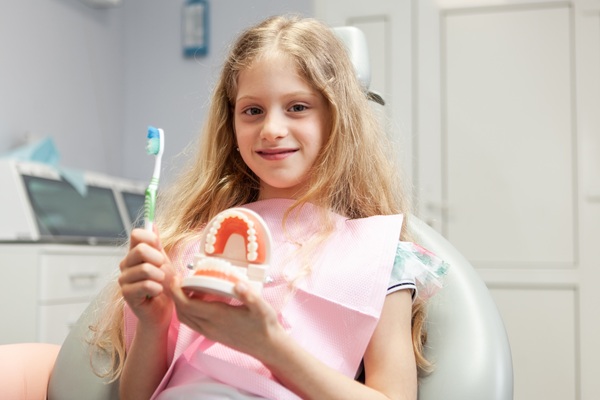A Parent’s Handbook to Braces for Kids

Braces for kids might be what your child needs to put their teeth alignment problems or bite issues behind them. Pediatric dentists have used braces to address orthodontic issues for centuries, and they are still one of the most commonly used teeth straightening devices.
Braces are dental devices that are used to improve teeth alignment. Historically, braces were usually made out of metal alloys, but they can also be made with tooth-colored or clear plastics these days. They work by gently pushing a person’s teeth to an improved alignment over a period of 12 to 36 months. Braces consist of brackets that are cemented to the patient’s teeth and wires that connect the brackets. Tightening these wires increases the force applied to the patient’s teeth.
Some of the issues braces for kids can be used to fix include:
- Spaces between teeth
- Crowded teeth
- Crooked teeth
- Misaligned teeth
- Underbites
- Overbites
Choosing the ideal braces for kids
Parents who are concerned their child might have any of the bite issues listed above should visit a pediatric dentist for an assessment. The dentist will visually inspect the child’s teeth and use diagnostic tests like X-rays to help determine appropriate treatments.
Even parents who do not think their children have any bite issues should bring them in for an evaluation before their seventh birthday. At this point, the child’s bite is defined enough to pinpoint issues and treat them. It is also easier to straighten a child’s teeth at this point since their jaw and other facial structures are still developing.
The four main types of braces parents get to choose from are:
1. Metal braces
These have been around for centuries and remain the most durable and effective type of braces. The main drawback of metal braces is their poor aesthetics. Many people do not like the visuals of having what looks like miniature railway tracks on their teeth.
Metal braces have evolved a lot over the years, and today’s devices are smaller and sleeker than the metal braces used decades ago. They can also be customized with any color, logo, or whatever else your child is into.
2. Ceramic braces
These devices are not as durable as metal braces, but they are less conspicuous. Instead of metal brackets and wires, these devices use tooth-colored ceramic brackets and transparent or tooth-colored wires. It makes the device a lot less noticeable during interactions, which many kids and adults prefer. However, some severe orthodontic issues that require lengthy treatments might require using metal braces.
3. Lingual braces
These are one of the least popular types of braces due to the discomfort they cause some patients, but they provide the best aesthetics. Lingual braces are quite similar to traditional braces, but instead of attaching the brackets and wires to the front of a patient’s teeth, they go on the back of their teeth.
4. Self-ligating braces
These braces are made with sliding doors that hold the wires of the device in place, removing the need for rubber bands like traditional braces. Self-ligating braces also come with less noticeable, smaller brackets. They are also generally viewed as the most comfortable type of braces.
Set your child up for a lifetime of good dental health
Poorly aligned teeth can lead to speech, bite, and developmental issues if left untreated. Call or visit our Asheville clinic if your child’s teeth are poorly aligned to set up a consultation with our pediatric dentist.
Request an appointment here: https://www.babytoothdoc.com or call Dennis R. Campbell, DDS at (828) 254-7291 for an appointment in our Asheville office.
Check out what others are saying about our dental services on Yelp: Orthodontics for Children in Asheville, NC.
Recent Posts
Routine visits to a dentist for kids lay the foundation for a lifetime of healthy smiles. Pediatric dental care is carefully structured to meet the developmental needs of children, offering a combination of preventive and restorative services that grow with them. With tailored guidance and techniques, a dentist for kids can preserve oral health and…
Children, who are particularly prone to tooth decay, should brush their teeth twice a day and make regular visits to a pediatric dentist. These healthy habits can help reduce the risks of developing cavities and serious dental issues. Using fluoride toothpaste is also an important step in childhood dental care that can add an extra…
A baby root canal may sound scary, however, it is nothing to be afraid of. Modern-day dentistry has allowed for the evolution of gentler techniques and safer approaches, thus reducing the risk of complications and pain during the procedure.Baby root canals, in particular, are done differently as they are performed in a pediatric dentistry setting,…
Cavity treatment for kids is a common concern for many parents, as dental decay remains a prevalent childhood health issue. Early intervention and proper care are essential for maintaining healthy teeth and preventing future problems. Partnering with a pediatric dentist can take some of the guesswork out of promoting your child's oral health. To start…


